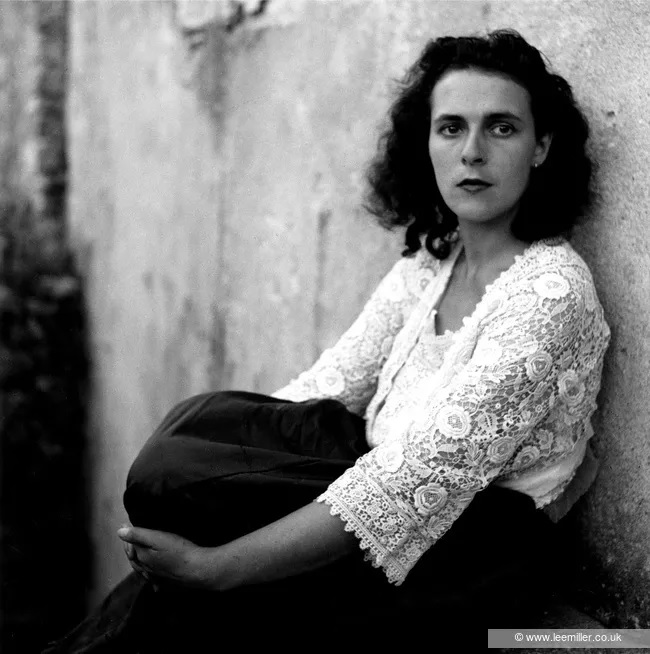
Lee Miller ‘Leonora Carrington, St.Martin d’Ardeche, France’ 1939.
The visionary Surrealist painter and writer Leonora Carrington, who died in 2011, is enjoying a surge of international attention. Her work inspired the theme of this year’s Venice Biennale, titled “The Milk of Dreams” and curated by Cecilia Alemani. Over the past decade, academics have studied Carrington’s work with renewed fervor, and her auction prices are soaring. The themes that dominate her magical oeuvre—such as feminism, gender fluidity, and profound ecoconsciousness—could not be more timely.
This past May, Carrington’s painting The Garden of Paracelsus (1957), which features androgynous figures engaged in mysterious rituals, sold for $3.2 million at Sotheby’s and set a new auction record for the artist. Carrington’s work is prominent in the current exhibitions “Surrealism and Magic: Enchanted Modernity” at the Peggy Guggenheim Collection in Venice and “Surrealism: Beyond Borders” at Tate Modern. Her legacy is also reverberating far beyond institutional walls: Her feisty, uncompromising spirit and strange sui generis style are increasingly influencing contemporary artists, and female painters in particular.
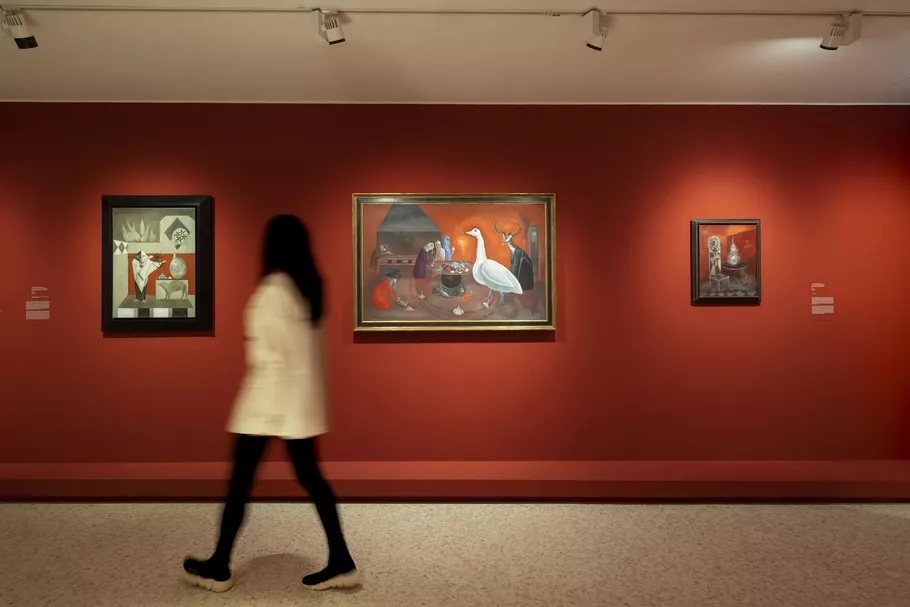
Installation view of “Surrealism and Magic: Enchanted Modernity” at the Peggy Guggenheim Collection, 2022. Photo by Matteo De Fina. Courtesy of the Peggy Guggenheim Collection.
“She was so ahead of her time in her own art and writing and ideas and perspective on the world…she was such an innovator and I think people are only starting to realize that now,” said academic Catriona McAra, when asked to explain Carrington’s increased visibility and popularity. McAra is the author of the forthcoming monograph “The Medium of Leonora Carrington: a feminist haunting of the contemporay arts,” which explores Carrington’s influence on contemporary creative figures.
Born in Lancashire, England, in 1917, Carrington refused to bow to convention from an early age. She rejected the role of society wife and mother that her parents expected her to fulfill, heading to London to study art instead. She fell in love with the much older artist Max Ernst and moved with him to Paris, but refused to to be confined to the role of muse or “femme enfant,” an infantalizing term which the Surrealists imposed on young women in their milieu.
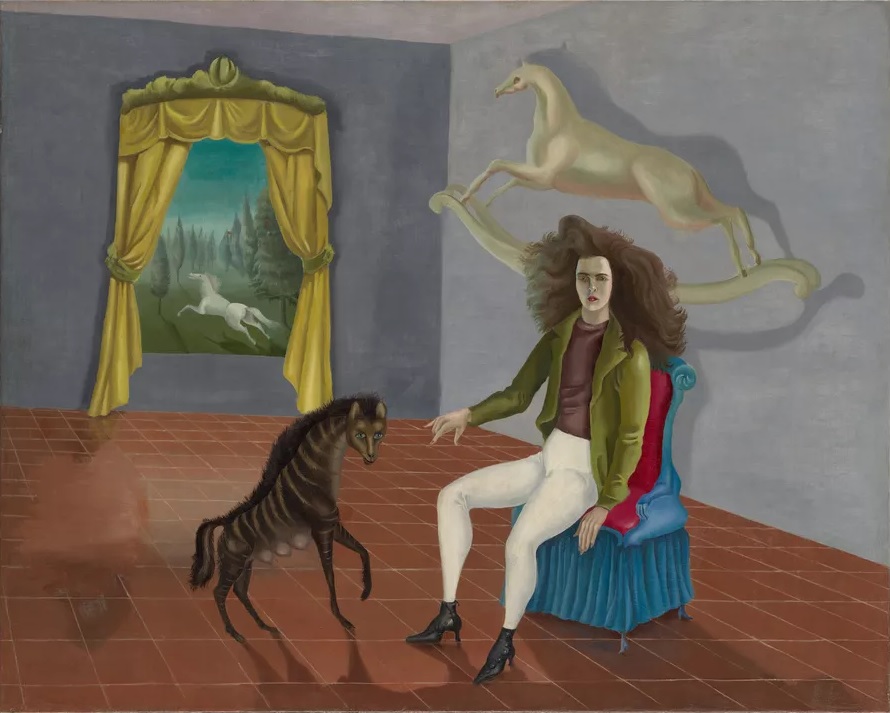
Leonora Carrington ‘Self-Portrait’ ca. 1937–38.
Carrington’s work reflected such self-determination. In her Self Portrait (Inn of the Dawn Horse) (1937–38)—on view in Tate Modern’s “Surrealism: Beyond Borders”—the artist sits, witchily, on an anthropomorphic chair and gestures towards a prancing hyena who appears to be under her spell. With its depictions of a powerful female figure and animal familiars—and its conviction in the magical, transformative nature of art—the painting offers both an uncompromising declaration of independence and a visual manifesto of ideas that Carrington spent a lifetime exploring.
After enjoying such a promising start, Carrington faced significant adversity. She suffered a mental breakdown after Ernst, as a German living in France, was interned as an enemy alien at the start of World War II. She was confined to a Spanish asylum against her will (an experience which she eventually detailed in her memoir Down Below) and fled to the Mexican embassy in Lisbon, then to Mexico in 1943. By this time, Ernst was already remarried—to Peggy Guggenheim.
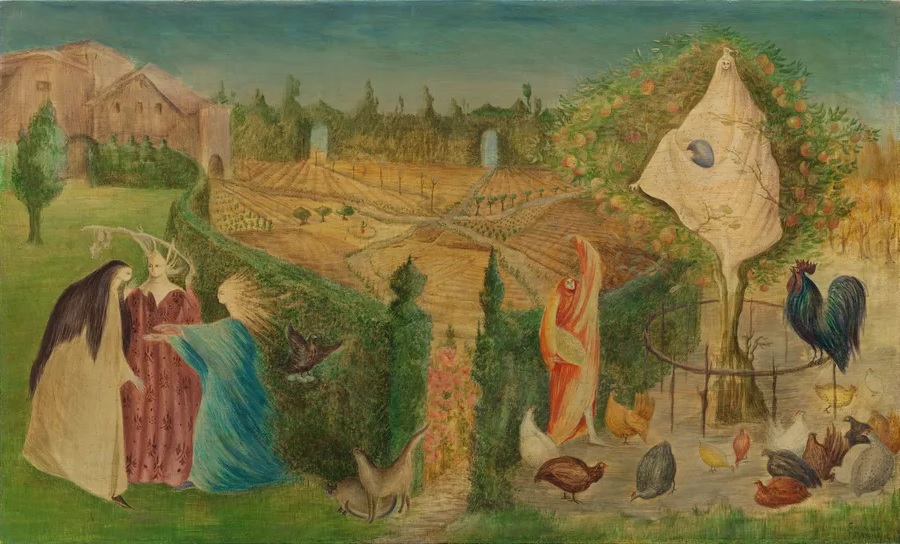
Leonora Carrington ‘The Kitchen Garden on the Eyot’ 1946
In Mexico, Carrington continued to explore her long-standing interest in the occult and articulate her growing feminist consciousness. She populated her work with sorceresses who symbolized female empowerment and mystical, androgynous creatures who suggested the possibilities of transformation and the limitations of the gender binary. McAra noted that Carrington’s approach to gender fluidity is considered “one of her most enduring qualities” among contemporary artists.
Carrington’s feminism was inextricably linked with her ecological concerns. Throughout the artist’s oeuvre, female figures serve as protectors of nature. In 1970, Carrington wrote the essay “Female Human Animal” (also known as “What is a Woman”), in which she further articulated her ideas that women need to challenge patriarchal authority in order for the planet to survive. That same decade, she initiated the first women’s liberation group in Mexico and designed a poster called Mujeres Conciencia (1972), promoting the movement.
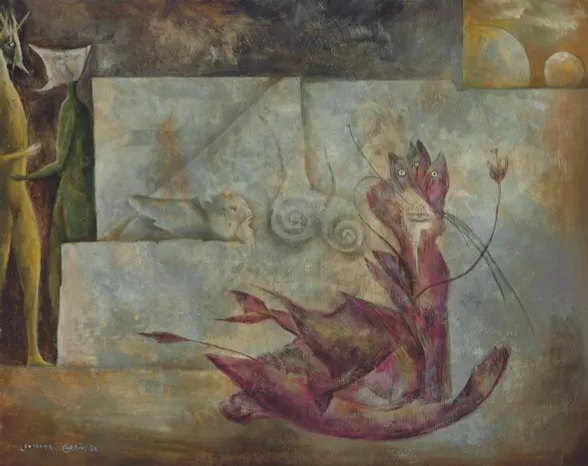
Leonora Carrington ‘El gato’ 1951
In her later years, Carrington developed a cult following among female artists who were captivated by both her persona and her work. Some even journeyed to Mexico to meet the artist. “It’s about her and the experience of her and that seems to be very compelling for a number of creative individuals,” said McAra. “People talk about their pilgrimage of going to meet her and the right of passage they experienced upon entering her house. It wasn’t necessarily about the work, it was as if she were the work.”
Artist Lucy Skaer went on such a pilgrimage to meet Carrington in 2006. The visit inspired her installation Leonora (2006), which consists of two small sculptures, a short film, a large drawing, and a mahogany table inlaid with mother-of-pearl. The film, Leonora (The Joker), includes footage of Carrington’s hands, alluding to the artist’s process of creation. The table, Leonora (The Tyrant), features inlay in the shape of grasping, claw-like hands and suggests both the privileged background that Carrington fled and the anthropomorphic furniture in her work.
Video and performance artist Anne Walsh also spent generative time with Carrington. Beginning in 2007, she worked on a decade-long, multimedia response to Carrington’s feminist novel The Hearing Trumpet, which Walsh saw as “a thrilling, subversive example of old age.” In order to prepare herself for menopause and old age—transformations which have so often rendered women invisible but which Carrington embraced in both her literature and art—Walsh envisaged herself as an “Apprentice Crone,” rehearsing for the trials and tribulations of female aging. In her book Hello Leonora, Soy Anne Walsh (2019), the artist detailed her creative process for the project, which grew to encompass photographic and laser-cut works on paper and a four-channel video installation.
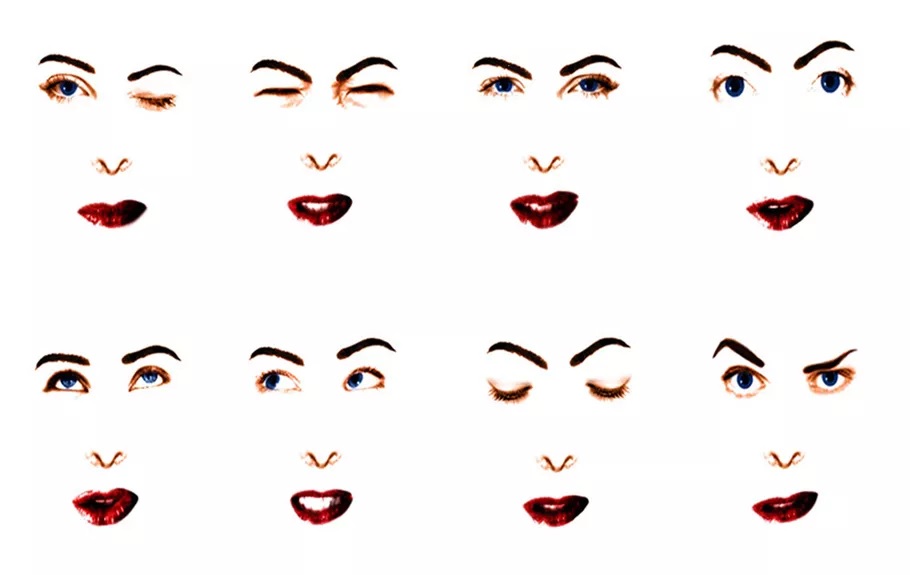
Lynn Hershman Leeson ‘Agent Ruby (detail graphic)’ 1996-2002
Carrington, who once said she was the product of a union between her mother and a machine, has also been a long standing source of inspiration for Lynn Hershman Leeson, winner of a special mention at this year’s Venice Biennale. For over 50 years, Leeson has considered the instability of identity and the easy convergences of technology and the body. Leeson’s Agent Ruby (1998–2002) is “an artificial intelligent web agent” who grows more intelligent as she engages with users. Her groundbreaking Electronic Diaries (1984–2019) foretold today’s online confession culture.
The Biennale also features work by Berlin-based multimedia artist Marianna Simnett, who’s part of a new generation of artists engaging with Carrington’s work. Simnett’s brutal three-channel video installation The Severed Tail (2022) tells the story of a piglet whose tail is cut off—a barbaric practice now largely banned in commercial farming. In a recent talk at the Venice Biennale, Simnett said Carrington gave her “the courage to be weird and to take a story out of the normative space into something much more exploratory and improvised.”
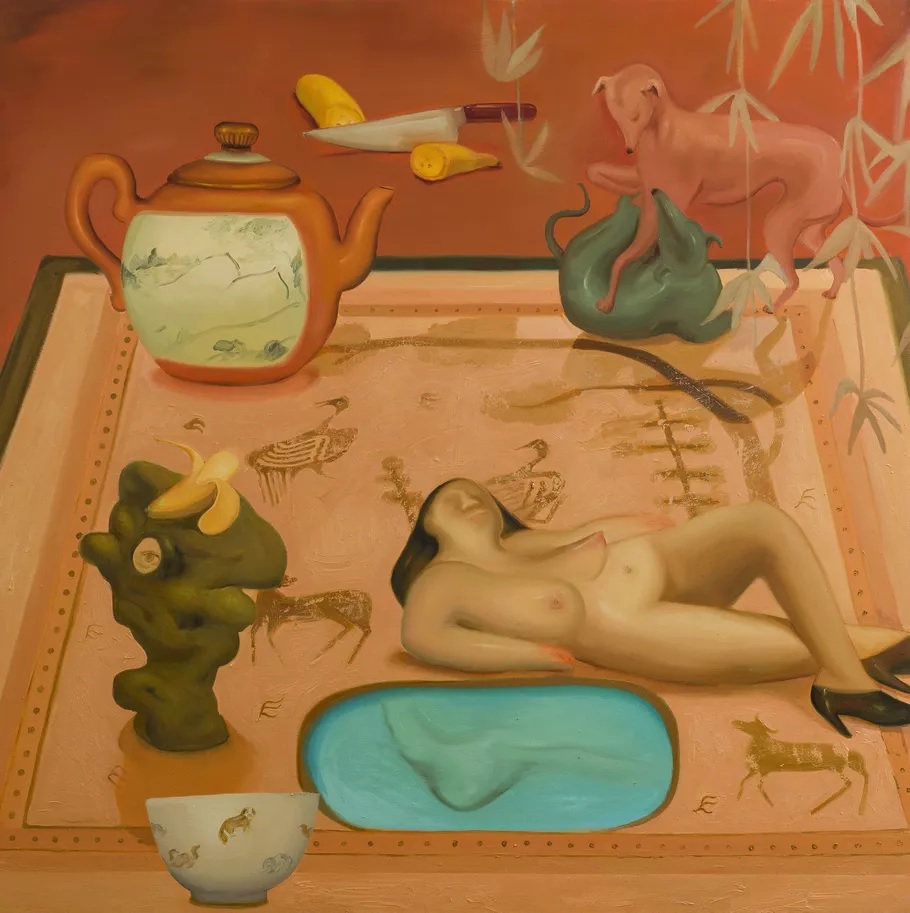
Dominique Fung ‘An Artistic Entertainer’ 2019
Outside of the Biennale, painters Dominique Fung and Jessie Makinson have both cited Carrington as a source of inspiration. Fung’s canvases, which feature invented worlds that merge the real and the uncanny, critique the orientalism and objectification of Asian women that have pervaded Western art history. Like Carrington, Fung fills her canvases with unapologetic female figures and a sense of subversive magic. Makinson similarly populates her richly detailed paintings with mythical female characters and androgynous figures who reside in supernatural environments. Drawing on feminist science fiction and folklore, she invents and paints women who refuse to conform to patriarchal notions of femininity.
The world may have been slow to wake up to Carrington’s unrepentant ecoconsciousness and feminism, but as we face a growing climate crisis and threats to bodily autonomy, her work is as relevant as ever. May many more uncompromising sorceresses follow in her wake.
Source: Artsy







